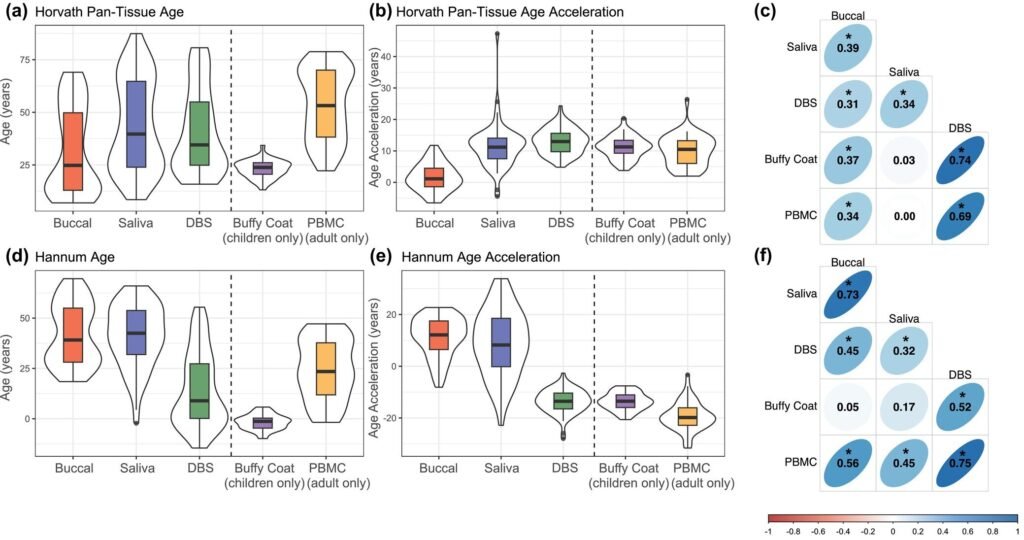Biological age, a measure of how well the body is functioning, can differ from chronological age, which is the amount of time since someone was born. Researchers have developed epigenetic clocks to estimate biological age by comparing tissue samples to established markers. However, a new study led by researchers at Penn State Department of Biobehavioral Health has found that the type of tissue used to measure biological age can significantly impact the accuracy of the results.
In a study published in Aging Cell, researchers compared different tissue samples, including blood and oral tissue, with seven epigenetic clocks to estimate biological age. The study included 284 tissue samples from individuals aged 9 to 70 years old. The results showed that oral tissue samples led to significantly higher estimates of biological age compared to blood samples across most epigenetic clocks tested.
Lead author of the study, Abner Apsley, emphasized the importance of using the correct tissue type when estimating biological age. “It is very clear that the tissue used to measure someone’s biological age must match the tissue used when the clock was created. Otherwise, estimates of biological age will not be valid,” Apsley stated. The study also found that epigenetic clocks created using blood samples were more accurate in estimating biological age compared to those created using oral tissue.
While tests of biological age are not yet common in medical settings, researchers believe that biological age could be used in the future to identify individuals at risk for age-related diseases or as a tool for forensic scientists. The research team, including Abner Apsley and Idan Shalev, associate professor of biobehavioral health at Penn State, highlighted the potential applications of biological age estimates in healthcare and other fields.
The study also included researchers from Duke University, Texas A&M University, and the University of Rochester. The findings underscore the importance of using the correct tissue type when estimating biological age and suggest that further research is needed to develop epigenetic clocks using different tissue samples. The study was published in Aging Cell and provides valuable insights into the accuracy of measuring biological age using different tissue types.
For more information on the study, you can access the full article in Aging Cell with DOI: 10.1111/acel.14451. This research was conducted by a team of experts from various institutions, including Pennsylvania State University. Stay tuned for further developments in the field of biological age estimation and its potential applications in healthcare and beyond.


